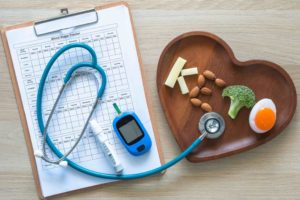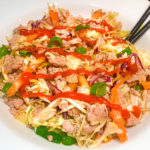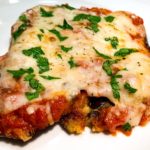If you want to avoid the Keto-flu or if you’ve already fallen victim to it, it’s super important that you familiarize yourself with 3 key electrolytes (Sodium, Magnesium, and Potassium) and ensure you consume an adequate amount of them. This is especially important when you start the Keto diet and your metabolism is still transitioning from burning carbs for energy to burning ketones instead. Your body will lose water and electrolytes during this time, and if you don’t replenish these electrolytes, you will likely feel terrible and your Keto journey – to health, weight loss, or whatever your personal goal is – will be at risk!
SODIUM
Your body needs an adequate amount of sodium (more commonly known as salt) for proper nerve and muscle function, and to help maintain water in the body. Sodium also helps to keep the brain healthy, and is necessary for the electrical signals in the brain to function. If your body becomes depleted in sodium, you may experience Keto-flu symptoms such as fatigue, headaches, brain fog, or muscle cramps. Other diets tend to encourage restricting sodium, but it’s essential you supplement this on the keto diet.
Aim for at least 3000-5000 mg of sodium a day (equivalent to 3-5 grams or 1-2 teaspoons)

The easiest way to get more sodium is to simply add more sea salt to all your Keto recipes. Other alternatives to ramp up the sodium in your diet include:
- Bouillon cubes / bone broth
- Pickle juice
- Olives
- Bacon
- Or you can purchase Sodium Chloride Tablets, which is what I use.
MAGNESIUM
Magnesium is one of the most important minerals – every single cell in your body contains magnesium and requires it to function properly. Magnesium is required for over 300 biochemical reactions in your body so it’s essential for maintaining overall health. Despite its importance, many people tend to be deficient.
An obvious sign you are magnesium deficient is if you get muscle cramps (or ‘Charlie Horses’ in your legs). Other symptoms of magnesium deficiency include anxiety and lethargy. Fortunately it’s easy to supplement either by taking 400 mg of Magnesium daily (I take one of these Magnesium vitamins every morning and have not had any issues with muscle cramps since!) or by ensuring your diet has a sufficient amount of Magnesium.
Keto-approved foods which are rich in Magnesium include:
- Avocado
- Almonds
- Dark Chocolate (Aim for 90% cocoa or higher, in limited doses to remain under your carb limit)
- Salmon
- Artichokes
- Spinach
- Pumpkin Seeds

POTASSIUM
Potassium is critical for your heart, kidneys, and other organs to function properly. For example, it helps maintain a normal blood pressure by relaxing your blood vessels, and it also helps ensure your hearth rhythm remains regular. Without a sufficient amount of potassium, some people develop heart palpitations.
The recommended daily potassium intake for adults is 4700 mg a day. While potassium may be taken as a supplement, the FDA limits doses to 99 mg a pill which represents a very small amount of your daily requirement (approximately 2%). So instead of supplementing through vitamin form, you’re much better off getting your daily potassium needs though whole foods as part of your diet. Fortunately there are a ton of Keto-friendly foods to choose from.
Keto-approved foods which are rich in potassium include:
- Avocado
- Beef
- Brussel Sprouts
- Broccoli
- Cauliflower
- Wild-caught Salmon
- Oysters
- Mushrooms
- Zucchini /Squash
- Spinach
- Pork
That’s everything you need to know about electrolyte on Keto! But before you go, don’t forget to check out my Recipes page for some easy & delicious Keto meals.

Or return to my Keto Beginner’s Guide here.






























